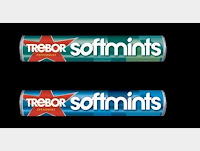- Ingestible products with cosmetic benefits are an emerging product category for both the nutritional and the cosmetics industries.
- Beauty yoghurts, anti-wrinkle drinks, and skin care supplements are all part of a market expected to be worth $2.5 bn by 2012, according to market research company Kline.
- However, the industries don’t seem to agree on what to call this emerging product category. For the healthy foods and supplements industry these products fall under the term cosmeceuticals, which for the cosmetics industry means something quite different.
- As these industries begin to work together to take advantage of this growing market, there is a dire need for some clear definitions.
- Cosmeceutical, for the cosmetics industry, describes products that sit at the boundary of cosmetics and pharmaceuticals.
- American dermatologist Albert Kligman is generally accredited with inventing the term in the late 1970s as something that does more than just colour the skin and less than a therapeutic drug.
- At present the term has no regulatory standing, and is used more in a marketing context to highlight formulations or ingredients that claim to have tangible effects on the skin’s structure and appearance.
- This definition has been adopted by market research company Euromonitor which defines cosmeceuticals as the blurring of cosmetics and pharmaceutical products which contain biologically active ingredients that have an effect on the user.
- An emerging class of active ingredients that fall into this category is neuropeptides, designed and constructed to block neurotransmission signals and therefore decrease muscle contractions, much in the same way as botox.
- These, like all cosmeceutical ingredients for the cosmetics industry, are topically applied.
- One point of controversy, from the view of the cosmetics industry, lies in how close they are to medicines; too big an effect on the physiology of the skin and they become a pharmaceutical product and have to contend with more stringent and expensive legislation.
- Other critics of the term claim it is misleading as it suggests there are inherent differences between cosmetics and cosmeceuticals that may not, in reality, exist.
- However, the growth of ingestible products that claim to have beauty benefits is highlighting even greater controversies associated with the term.
- For the healthy foods and supplements industry, cosmeceuticals means something very different.
- Cosmeceuticals here can be thought of as the merger of nutraceuticals (nutritional supplements) with cosmetics. In other words, a cosmeceutical is an ingestible ingredient for functional foods or nutritional supplements that has cosmetic benefits.
- Evidently this definition relies on the ingredient being ingestible, in direct contrast to the cosmetics definition which is based on the topical nature of the ingredient.
- Although for the nutritional industry ingestible products with beauty benefits all take the name cosmeceutical, for the cosmetics industry they have a number of pseudonyms.
- Nutricosmetics, beauty foods, beauty supplements and beauty from within appear to be almost interchangeable within the product literature, marketing claims and market research reports. However, outside of the nutritional industry, one label these products do not sport is cosmeceutical.
By Katie Bird, 29-Jun-2009 - Cosmetics design.com












